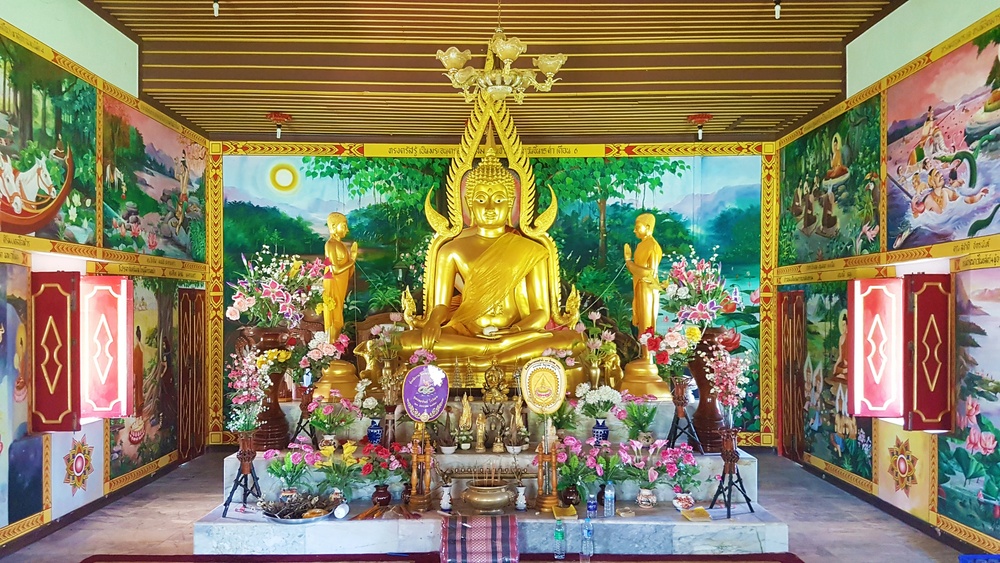India’s rich spiritual tapestry is interwoven with countless Buddhist monasteries, many of which are world-famous pilgrimage sites. However, beyond the well-trodden paths lie numerous Buddhist Monasteries in India that remain relatively unknown yet offer equally profound spiritual experiences and captivating histories. These hidden gems allow travelers to delve deeper into India’s Buddhist heritage away from the crowds, surrounded by tranquility and authentic local culture. If you are an avid traveler or a spiritual seeker eager to explore offbeat destinations, here are some lesser-known Buddhist monasteries in India that are truly worth discovering.
1. Tawang Monastery, Arunachal Pradesh
Though not entirely unknown, Tawang Monastery often remains overshadowed by the more popular monasteries in Ladakh and Sikkim. This majestic Gelugpa monastery is perched high in the eastern Himalayas and is the largest monastery in India. Despite its size, the remote location keeps it less crowded, offering visitors a serene and immersive experience in Tibetan Buddhism amidst breathtaking Himalayan landscapes.
2. Phugtal Monastery, Ladakh
Nestled in the remote Lungnak Valley of Zanskar, Phugtal Monastery is one of the most secluded Buddhist monasteries in India. Built into a cliffside cave, this unique monastery dates back to the 12th century and is accessible only by trekking through rugged terrain. The isolation of Phugtal offers unparalleled solitude and a rare glimpse into monastic life far from modern distractions.
3. Tshalpa Monastery, Sikkim
Hidden in the quiet corners of Sikkim, Tshalpa Monastery is a small but spiritually significant monastery belonging to the Kagyu lineage of Tibetan Buddhism. It is less frequented by tourists, making it an ideal place to observe authentic monastic rituals and interact closely with the resident monks. The monastery’s peaceful setting amidst dense forests adds to its charm.
4. Phodong Monastery, Sikkim
While Rumtek Monastery often grabs the limelight, Phodong Monastery is a lesser-known treasure worth visiting. Located near Gangtok, it was founded in the 18th century and serves as an important seat of the Kagyu sect. The monastery houses ancient scriptures and relics and is renowned for its vibrant annual festivals that showcase traditional Buddhist culture.
5. Pangolakha Monastery, Sikkim
Tucked away in East Sikkim, Pangolakha Monastery is another serene Buddhist center rarely visited by tourists. This monastery is surrounded by lush greenery and offers spectacular views of the Kanchenjunga range. Visitors can enjoy peaceful meditation sessions and explore the monastery’s beautiful prayer halls and stupas.
6. Chokling Gompa, Himachal Pradesh
Located near Bir in Himachal Pradesh, Chokling Gompa is a quaint Tibetan Buddhist monastery founded by the renowned Tibetan lama, Dilgo Khyentse Rinpoche. The monastery is a center for Buddhist learning and practice, featuring traditional murals and statues. Bir itself is known for its Tibetan community and paragliding, making this monastery an offbeat spiritual stop.
7. Gaden Namgyal Lhatse, Himachal Pradesh
Also known as the Tibetan Institute of Higher Studies, Gaden Namgyal Lhatse monastery is situated near Dharamshala and is part of the Tibetan exile community. It serves as an important educational institution where monks receive training in Buddhist philosophy. The monastery is peaceful and less commercialized, ideal for those wishing to experience authentic monastic life.
8. Sanga Choeling Monastery, West Bengal
Perched above the town of Pelling in West Bengal, Sanga Choeling Monastery is one of the oldest monasteries in the region, dating back to the 17th century. It belongs to the Nyingma sect of Tibetan Buddhism and is accessible only by a steep hike through dense forests. The monastery offers panoramic views of the Himalayas and a glimpse into traditional Buddhist practices.
9. Tholing Monastery, Ladakh
Located in the remote Zanskar region of Ladakh, Tholing Monastery is one of the earliest monasteries established in the area in the 10th century. Though partly in ruins, it remains a sacred pilgrimage site and holds exquisite ancient murals depicting Buddhist iconography. Its remote location ensures a quiet, contemplative atmosphere.
10. Samtenling Monastery, Sikkim
Samtenling Monastery is a relatively small but important religious site situated near Pelling. It is lesser known compared to the larger monasteries in the area but offers rich insight into the Nyingma tradition of Buddhism. The monastery is surrounded by rhododendron forests and is ideal for travelers seeking peaceful spiritual retreats.
Why Explore Lesser-Known Buddhist Monasteries in India?
While the famous Buddhist Monasteries in India like Mahabodhi Temple or Rumtek Monastery draw large crowds, these lesser-known monasteries provide an intimate and authentic experience. Their remote locations, often tucked away in serene mountain valleys or dense forests, make them perfect places for meditation, reflection, and learning without distractions.
Visiting these hidden gems also supports local communities and helps preserve the unique Buddhist traditions that thrive far from mainstream tourism. The peaceful surroundings, warm hospitality of monks, and the opportunity to witness rare rituals firsthand make these monasteries a spiritual treasure trove for discerning travelers.
Practical Tips for Visiting Lesser-Known Buddhist Monasteries
- Plan Ahead: Many of these monasteries are in remote regions with limited connectivity and accommodation. Planning your travel and stay in advance is crucial.
- Respect Local Customs: Dress modestly, remove footwear before entering prayer halls, and always seek permission before taking photographs.
- Best Time to Visit: The ideal time is usually from late spring to early autumn (April to October) when weather conditions are favorable for travel.
- Prepare for Trekking: Some monasteries, like Sanga Choeling or Phugtal, require trekking. Make sure you are physically prepared and carry adequate supplies.
- Engage with Monks: If possible, participate in meditation sessions or listen to monks’ teachings to enrich your spiritual experience.
Conclusion
India’s Buddhist Monasteries are not just ancient monuments but living centers of spiritual heritage. While the popular monasteries offer grandeur and history, these lesser-known Buddhist monasteries in India provide a quiet, soulful journey into Buddhist life. Exploring these hidden gems allows travelers to connect deeply with the spiritual essence of Buddhism and witness traditions preserved in their purest form. So, if you want to go beyond the usual and discover authentic Buddhist spirituality, add these lesser-known monasteries to your travel list—you won’t be disappointed.









